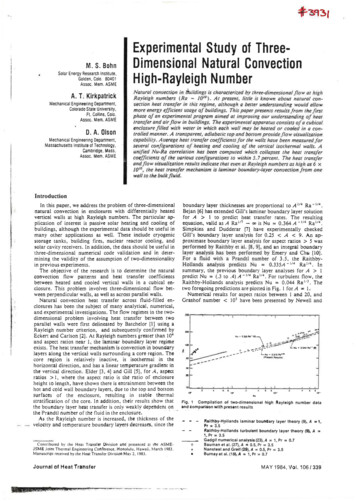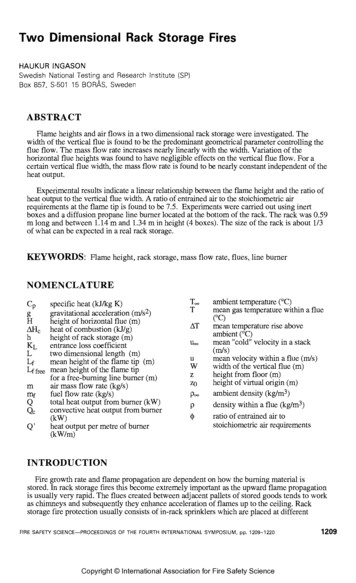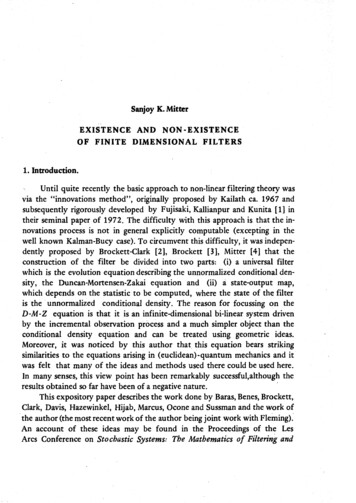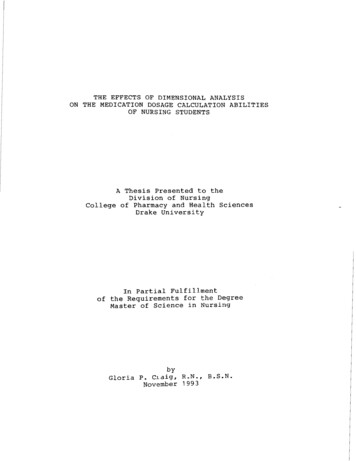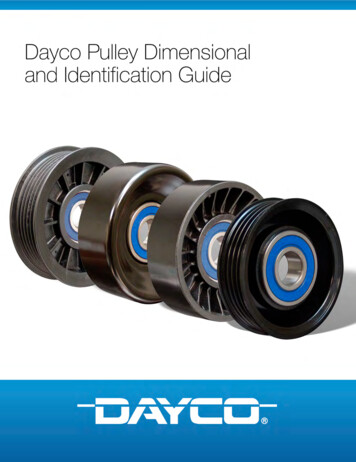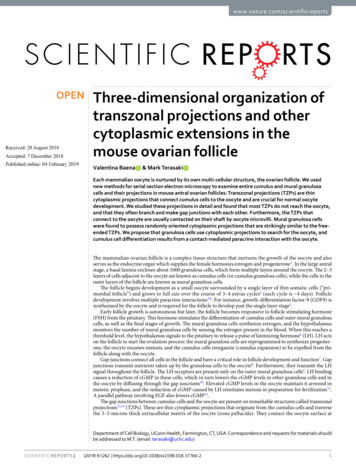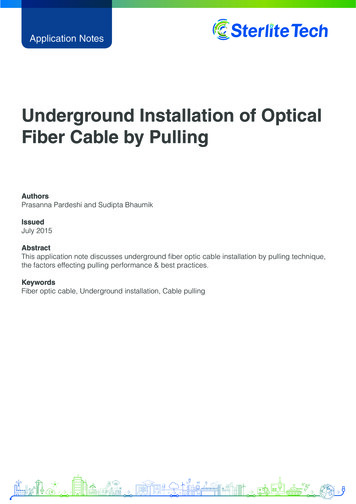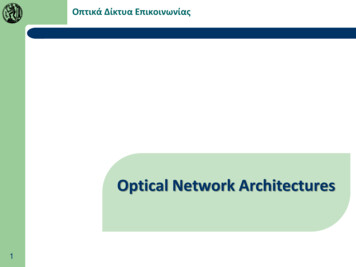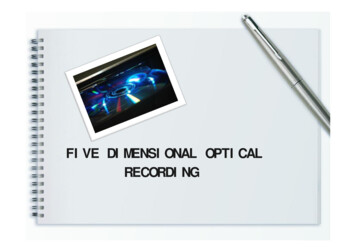
Transcription
FIVE DIMENSIONAL OPTICALRECORDING
INDEX Introduction on OPTICAL RECORDINGFive Dimensional Optical RecordingDesign of Recording mediumReading and WritingFields of ApplicationsAdvantages and DisadvantagesFuture scopeConclusionReference
INTRODUCTION ONOPTICAL RECORDING recording data on a medium through the use of light photographic film has been widely used as the medium data is present on the surface of the medium in theform of bumps and grooves eg: CD, DVD, Blu ray Disc etc
Reading logic ‘0’Reading logic ‘1’
Five Dimensional OpticalRecording project carried out by Phd student Mr. Peter Zijlstra ofSwinburne University of Technology in Hawthorn, Australia Introduced two more dimensions toexisting 3D optical recordingtechnique
Dimensions of Data Storage parameter used to identify each bit of DATA Dimensions in 5D optical recording are 3 Spatial Dimensions Color Dimension Polarization Dimension
Design of recordingmedium comes in the shape of a normal DVD, but thickness may varya. Gold nanorods in polymer solution coated on thin glass layerb. Spacerc. Polycarbonate substrate
Gold Nanorods have extraordinary optical and electronic properties they are spectrum and polarization sensitive SURFACE PLASMON RESONANCE of Gold nanorodsdefines their use in 5D optical recording
SPR emerges from the interaction between an electromagneticwave and the conduction electrons in a metal conduction electrons vibrate under the irradiation of lightat a resonant frequency results in two processes SCATTERING ABSORPTION frequency and bandwidth of the SP resonance depends onthe size and shape of the nanoparticles
The above figure shows the far-field images of SPR modes of thesame single gold nano-rod for various incident laser light at red(658nm), green (532 nm), and blue (488 nm)
Effect of COLORED Light on Gold Nanorods SPR of gold nanorods are wavelength depended and also onsize of nanoparticles
Effect of POLARIZED Light on Gold Nanorods during polarization of light electric field component is restrictedto a particular direction gold nanorods aligned in the direction of polarisation undergo SPR
Writing tunable laser is used : Titanium Sapphire Femtosecond Laser Light impinging with a certain color and polarization will only targeta subpopulation of gold nanorods, leaving the remaining rods forthe next recording nanorods change shape when written and retains the shapethereafter
Reading Reading performed by 2 Photon Luminescence Reading the bits involves focusing light from the same laser onthe bits but with much lower energy Nanorods shine as they absorb light with same wavelength andpolarization that changed their shape during recording
Fields of Application Medical Field Military and Security Arenas Entertainment sector Space Research Financial sector
Advantages Large storage space Compact and light Data security Can be manufactured on a large scale
Concerns Slow Writing speed Impracticality of using Titanium SapphireFemtosecond Laser Cost Concerns
Future Scope SAMSUNG has taken the rights of developing the drive Available in the market within 5 years Can increase the capacity to 10 TB Development much cheaper nanoparticles
Conclusion promising approach for bulk data storage By introducing color and polarization dimension to existingtechnology storage capacity can be increased to 1.6 TB with new advancement the storage can be increased to 10TB
Reference[1] Nanophotonics Down Under 2009 Devices and Applications ,www.swinburne.edu.au[2] Nano-particle Based Multi-Dimensional Data Storage.By Xiangping Li /thesis/xli 2009.pdf[3] Five dimensional optical .htm[4] Nanotech nanotech dvd.htm[5] Five dimensional optical recording full/nature08053.html[6] Five dimensional optical recordingTechnology Review (digital magazine)Published by /
THANK YOU
Questions
[2] Nano-particle Based Multi-Dimensional Data Storage. By Xiangping Li (Thesis) xli_2009.pdf [3] Five dimensional optical recording www.spectrum.ieee.org/fivedimensional-dvd.htm [4] Nanotech DVD otech_dvd.htm

